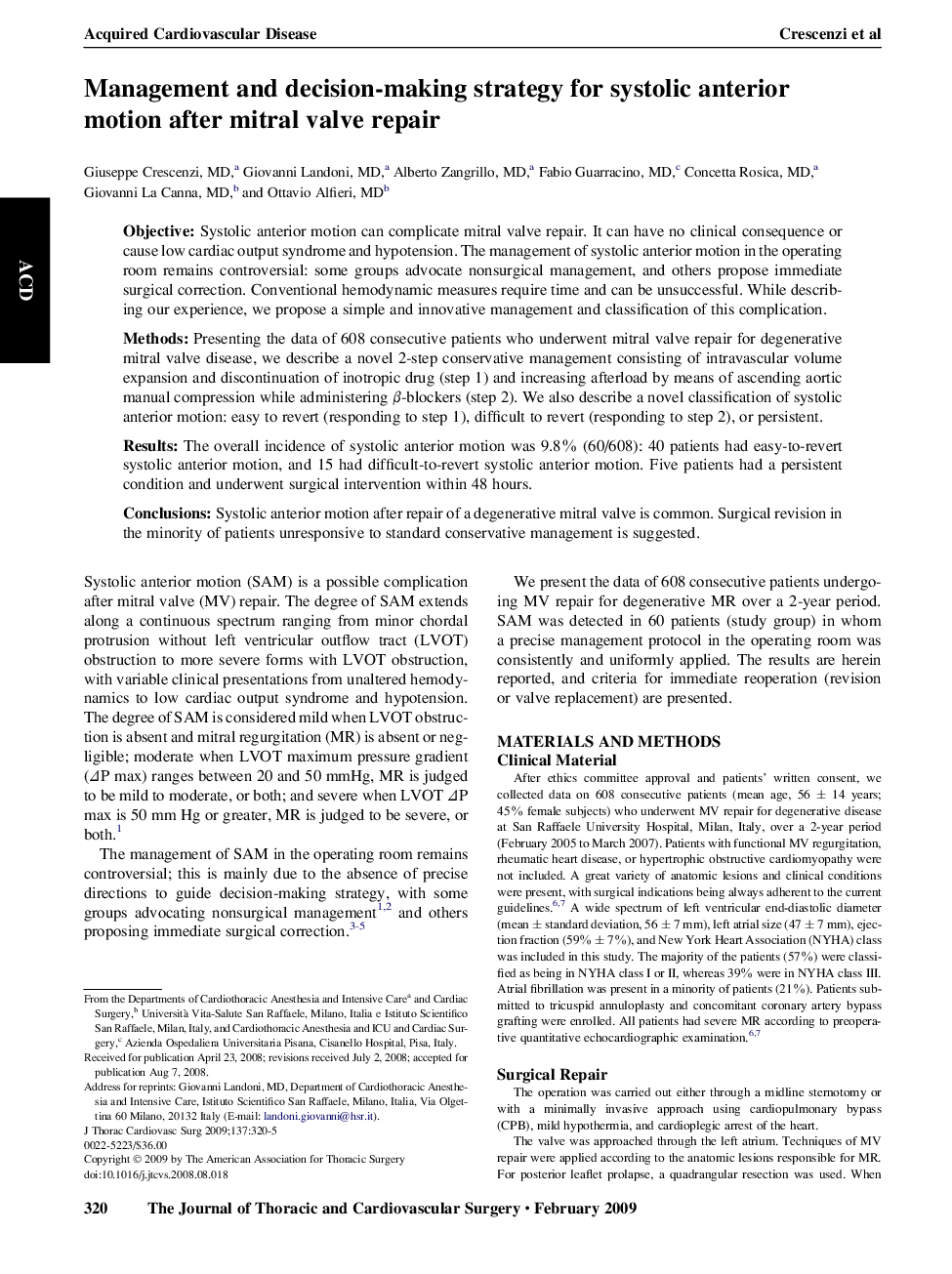| Article ID | Journal | Published Year | Pages | File Type |
|---|---|---|---|---|
| 2985735 | The Journal of Thoracic and Cardiovascular Surgery | 2009 | 6 Pages |
ObjectiveSystolic anterior motion can complicate mitral valve repair. It can have no clinical consequence or cause low cardiac output syndrome and hypotension. The management of systolic anterior motion in the operating room remains controversial: some groups advocate nonsurgical management, and others propose immediate surgical correction. Conventional hemodynamic measures require time and can be unsuccessful. While describing our experience, we propose a simple and innovative management and classification of this complication.MethodsPresenting the data of 608 consecutive patients who underwent mitral valve repair for degenerative mitral valve disease, we describe a novel 2-step conservative management consisting of intravascular volume expansion and discontinuation of inotropic drug (step 1) and increasing afterload by means of ascending aortic manual compression while administering β-blockers (step 2). We also describe a novel classification of systolic anterior motion: easy to revert (responding to step 1), difficult to revert (responding to step 2), or persistent.ResultsThe overall incidence of systolic anterior motion was 9.8% (60/608): 40 patients had easy-to-revert systolic anterior motion, and 15 had difficult-to-revert systolic anterior motion. Five patients had a persistent condition and underwent surgical intervention within 48 hours.ConclusionsSystolic anterior motion after repair of a degenerative mitral valve is common. Surgical revision in the minority of patients unresponsive to standard conservative management is suggested.
